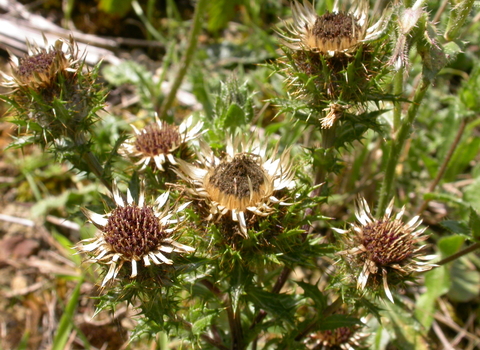
©Bruce Shortland
Carline thistle
The Carline thistle produces distinctive brown-and-golden flower heads that look like a seeded thistle. These flowers are attractive to a wide range of butterflies, including the very rare Large blue.

©Bruce Shortland